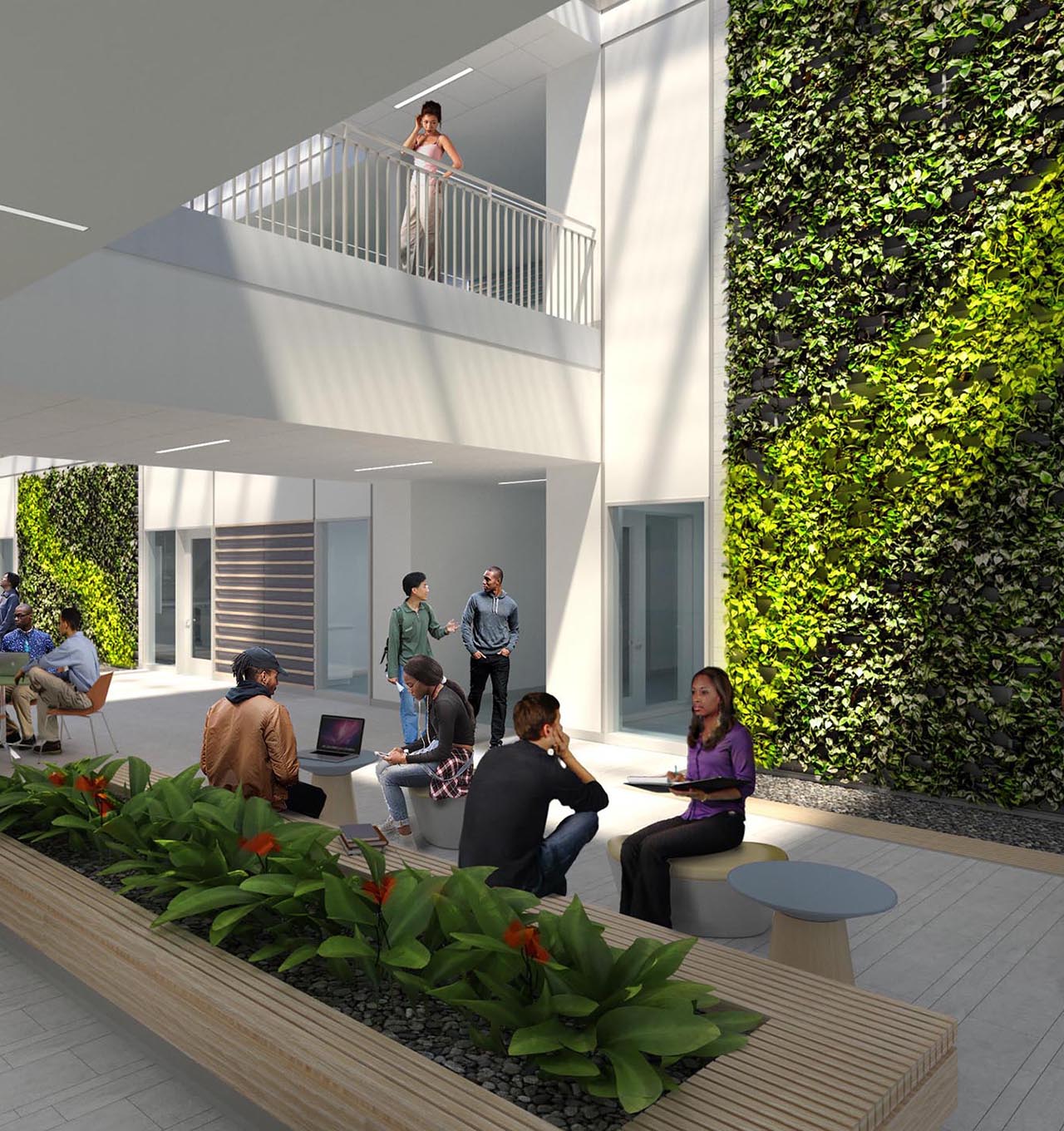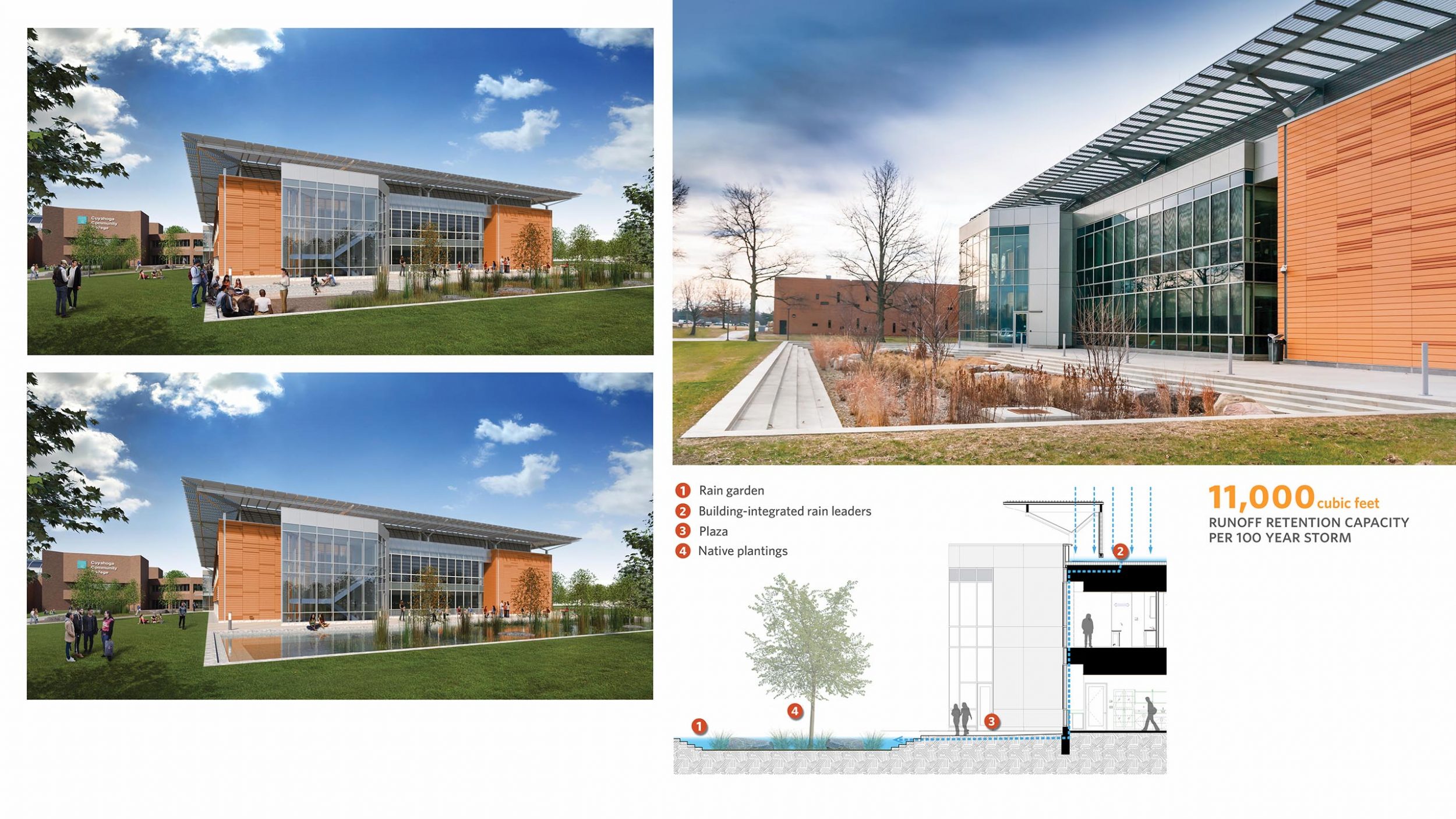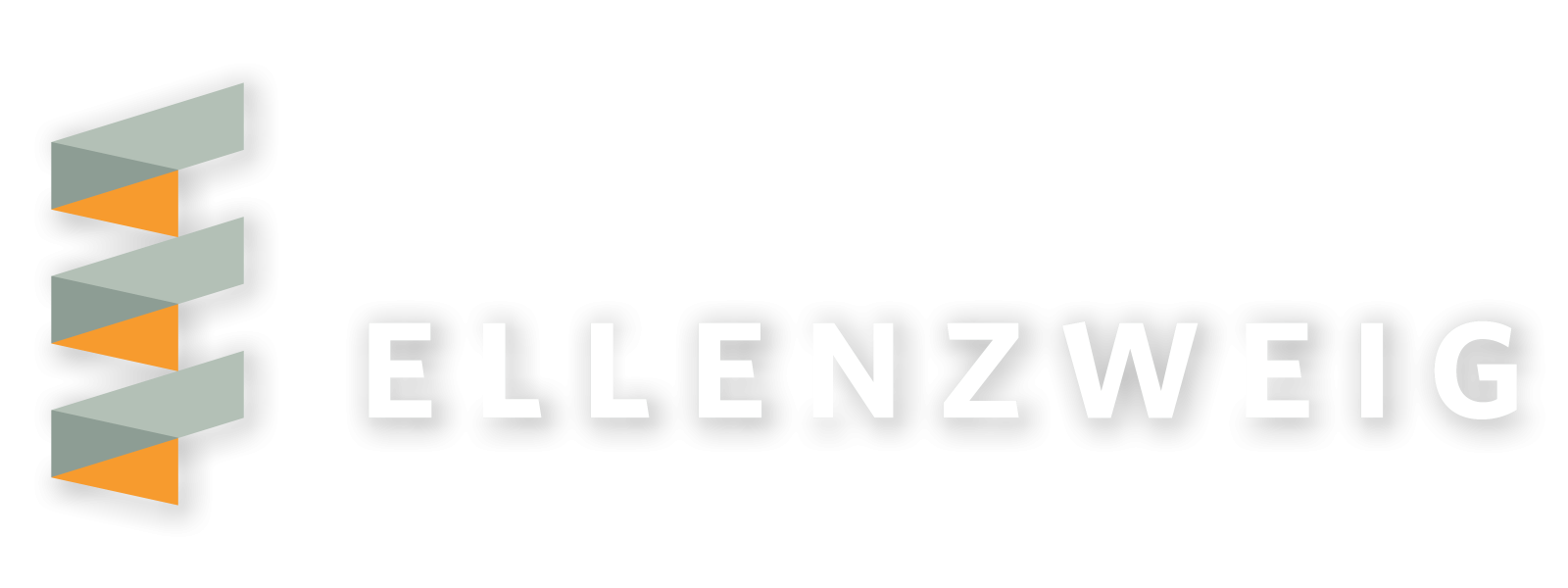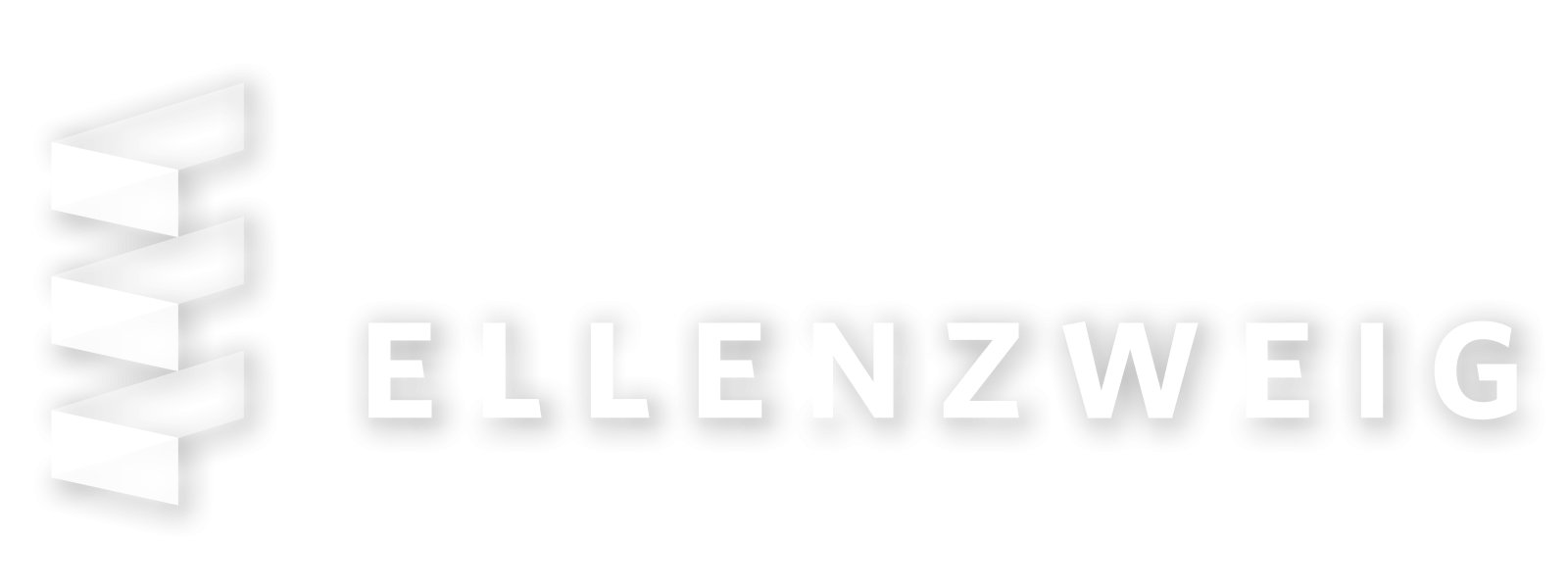Harvesting Energy, Innovative Stormwater Management, Integrated Biophilia, and Passive Systems
Sustainable and Holistic Design
Cuyahoga Community College
STEM Building Addition and Renovations
Parma, Ohio
Challenge: The essential aim of the new STEM Center is to inspire discovery, problem-solving, and collaboration in a refreshingly accessible and optimistic educational environment while providing the College with new teaching spaces. Contextually, the STEM Center joins a circa 1975, brick-clad, interconnected complex organized around a three-story, glass-roofed galleria.
Solution: Contemporary active-learning spaces and environmentally and socially sustainable design elements are the fundamental drivers of the project’s siting, form, and expression.
Simplicity of composition—from program and infrastructure distribution to the structural grid and modular terracotta façade components—inspired every design and budgetary decision. While the existing buildings are characteristically inward-focused, the STEM Center deliberately and outwardly puts science and sustainability on display. A roof canopy hovers over the building, shading the upper story and concealing mechanical rooms while giving the building a distinctive presence.
Transecting the building, a Student Commons establishes a new campus complex entry, where students enjoy dappled natural light though a long, building-integrated photovoltaic skylight, biophylic walls, and planter benches. A variety of adjacent study spaces invite the students to linger in the building between classes. A technology-rich “sand box” provides students and faculty with interactive virtual tools for collaborative exploration, while an interdisciplinary lab, where students investigate questions from multiple perspectives, promotes problem-based learning. Bordering the Commons, these spaces invite students to observe and/or join the science exploration.
The building’s simple rectangular footprint optimizes solar orientation while maximizing the building’s envelope-to-volume ratio. While the façades share a common design language, solar orientation differentiates the design of each. A landscaped storm-water wetland serves as an outdoor classroom and social space, transforming into a reflective pool following heavy rains. The building’s predicted energy-use intensity is 74.36 kBtu/sf/year; it consumes 70% less energy than similar buildings in the United States.
Benefit: A community college promoting STEM education sustains equitable communities by providing a high-quality education in contemporary learning spaces that will equip a future workforce with lifelong skills.
Visible building-integrated photovoltaics in the Commons’ skylight generate 34,220 kWh/year, and serve as an educational tool for students who can access information about the sustainable design features of the building on an interactive Energy Dashboard displayed in the Commons.
Biophylic walls and planters bring life to the social hub, connect its occupants with nature, and enhance health and well-being with natural air filtration, while students and instructors enjoy views to nature from 77% of occupied spaces.
With 70% less carbon emissions than similar buildings nationally, environmental benefits from this building are the result of reduced net carbon emissions predicted at 1,620 metric tons annually.



